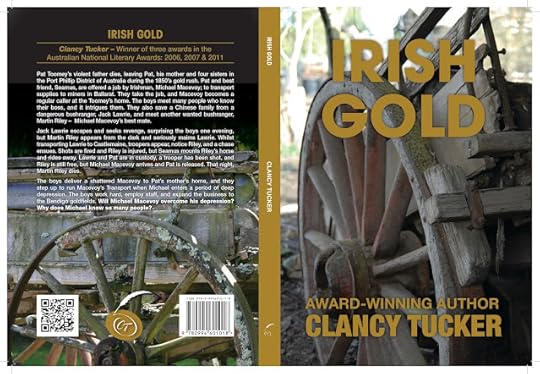Clancy Tucker's Blog, page 42
August 24, 2021
13 October 2021 - St. PATRICK, SNAKES, AND IRELAND
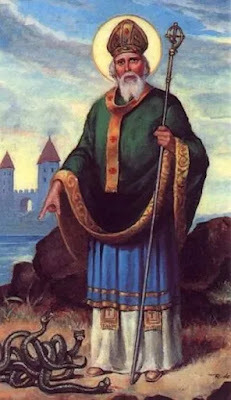
St. PATRICK, SNAKES,
AND IRELAND
G'day folks,
March 17 is St Patrick's Day or the Feast of Saint Patrick, a cultural and religious holiday celebrated every year in Ireland and by Irish communities around the world.
The celebration marks the anniversary of Saint Patrick’s death in the fifth century and represents the arrival of Christianity in the country.
Celebrations to mark the event long ago spread across the world from the "Emerald Isle". New York, for example, is noted for its extravagant parades and marching bands on this day – a tradition said to date back to 1776. Such is the enthusiasm that in recent years up to 300,000 marchers and two million spectators have brought the "Big Apple" to a virtual halt.
Boston, too, is noted for its spectacular parades with floats, marching bands, live music, and dyed green beer! Bostonians got in on the act even before New York, when in 1737 the newly formed Charitable Irish Society organised its first parade to honour St Patrick.
Not to be outdone, Chicago dyed its river green on March 17 in 1962 – the start of a new tradition. There has even been a parade on the streets of Moscow since 1992.
So what is known about St Patrick? Well, for a start, it is not certain that he was Irish, claims having been registered that he was born in Wales or Scotland!
Wherever his roots, the history books show that in the late fourth or early fifth century he was captured by pirates, sold into slavery and kept in bondage for six years in Ireland. Breaking away from his chains, as it were, he escaped to France where he became a monk. By about 432 he had become a bishop and returned to Ireland as a missionary.

According to Catholic scholars he arrived there in 433 and soon met the chieftain of one of the druid tribes, who tried to kill him. After an intervention by God, Patrick was able to convert the chieftain and went on to preach the Gospel throughout Ireland. He preached there for 40 years, converting thousands of people and building churches across the country.
He died in 461 at Saul, where he had built the first Irish church and is believed to be buried in Down Cathedral, Downpatrick.
Today, there are no snakes in Ireland and that, according to legend, is thanks to St Patrick. The priest John Colgan began work on a six-volume Irish ecclesiastical history in the 17th Century, including the lives of the saints. In it, he tells how Patrick drove the snakes out of Ireland by luring them to the sea where they were drowned.
Colgan relates that he accomplished this feat by beating a drum, but he did so with such fervour that he knocked a hole in it, putting the success of the miracle in jeopardy. Fortunately, we are told, an angel appeared and mended the drum.
Patrick then rendered the Irish soil so obnoxious to serpents that to this day they die immediately on touching it. Scientists say this is all bunkum and that snakes have never been seen on the island of Ireland. How would they have got there?
Scholars in their turn believe that the snake story is an allegory for St Patrick’s eradication of pagan ideology. American classics professor Philip Freeman says that since snakes often represent evil in literature, "when Patrick drives the snakes out of Ireland, it is symbolically saying he drove the old, evil, pagan ways out of the country and brought in a new age."
The saint's true name was Maewyn Succat. That obviously lacked an Irish ring and he later became known as St Patrick, named after his place of burial.

Clancy's comment: Go, St. Patrick! He obviously missed Australia. Here we have some of the most venomous snakes in the world. Just sayin' ...
I'm ...


12 October 2021 - THE MY LAI MASSACRE
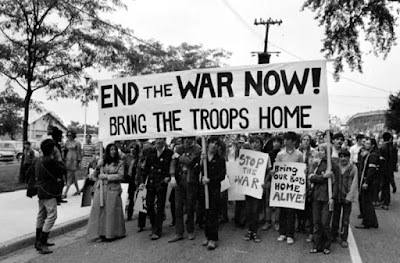
THE MY LAI
MASSACRE
G'day folks,
Considered by many to be one of the most shameful episodes in American military history, the My Lai massacre in Vietnam took place in 1968. Hundreds of defenceless civilians – mainly women and children – were shot dead by US soldiers.
My Lai will forever remain a haunting event in America’s conscience and will burn to the surface in any discussion or appraisal of this prolonged conflict.
The Vietnam War, as America knows it, or the “War Against the Americans to Save the Nation” as Washington’s former enemies called it, began in 1954 and lasted until 1975, although direct American involvement ended in 1973.
But there had been fighting in the country for decades, with the Vietnamese rebelling against French colonial rule.
In 1954, France decided to pull out and at the Geneva Conference that year it was agreed the country would be “temporarily” divided along the 17th parallel – thus creating communist North Vietnam and non-communist South Vietnam. Much to the anguish of the United States.
The White House, fervently opposing communism, supported the “domino theory” which basically stated that if one country fell to communism, its neighbour would follow, then its neighbour, and so on.
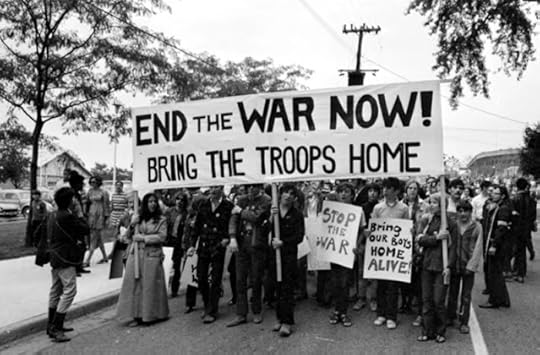
Richard Nixon, vice-president at the time to President Eisenhower, explained the theory in more detail: “If Indochina falls, Thailand is put in an almost impossible position. The same is true of Malaya with its rubber and tin. The same is true of Indonesia.
“If this whole part of South East Asia goes under communist domination or communist influence, Japan, which trades and must trade with this area in order to exist, must inevitably be oriented towards the communist regime.”
True or not, North Vietnam had a single aim – to unify the country under a communist regime modelled on those of Russia and China. South Vietnam preferred to align with the West.
The result was that the Soviet Union and China poured weapons, supplies and advisers into the North, while America supplied military advisers to the South. By 1959 there were about one thousand of them there, but President John F Kennedy, elected in 1960, had increased the number to 16,000 by the time of his death in 1963.
That same year North Vietnam sent 40,000 soldiers to fight in the South. In response, President Lyndon Johnson was to send in combat units for the first time. By 1964 there were 184,000 American troops in Vietnam – a figure that would climb significantly year by year. By 1969 it had risen to more than 500,000.
As the vicious and ugly war wore on, shortly after dawn on March 16 1968, three platoons of US troops belonging to “Charlie Company” were dropped from helicopters into the Son My area. They were on a search-and-destroy mission with orders to kill National Liberation Front (North Vietnamese) soldiers – called Viet Cong or VC by the US troops – who were reported to have been active in the area.
US Army commanders had advised that all who were found in the area could be considered Viet Cong or active sympathisers, and the troops were ordered to destroy their village.
1 Platoon, commanded by Lieutenant William Calley, was sent to My Lai – home to about 700 people. Calley was told he could expect to find members of the NLF in the area.
In fact, they found a village occupied only by women, children and old men – all of whom were rounded up into groups. After a search of their huts revealed only three or four weapons and no sign of the enemy, Calley ordered his men to open fire on the villagers, he himself shooting indiscriminately into the groups.
Mothers tried to shield their children but were shot, and the little ones also gunned down as they tried to run away. Calley was reported to have dragged dozens of people, including young children, into a ditch before executing them with a machine gun. Many women were raped and the village was burned to the ground.
US soldier Varnado Simpson testified in December 1969: “Everyone who went into the village had in mind to kill. We had lost a lot of buddies and it was a VC stronghold. We considered them either VC or helping the VC.”
However, not a single Viet Cong combatant was found there. "As a matter of fact," Private Michael Bernhardt would testify, "I don't remember seeing one military-age male in the entire place, dead or alive.”
None of this became known to the outside world until November 1969 when a US soldier, Paul Meadlo, was interviewed on television and admitted killing “ten or fifteen men, women and children” at My Lai. The full horror of the event then began to emerge and it soon became clear that many hundreds of villagers had been killed.
A number of US soldiers were charged with the killings but all – except for Lieutenant William Calley – were acquitted or had the charges against them dropped.
Calley, who had spoken earlier of “my troops getting massacred and mauled by an enemy I couldn’t see, an enemy I couldn’t feel, I couldn’t touch. . .” put forward the defence that he was in My Lai to hunt out communists and to destroy communism and that he was “only carrying out my orders, which were to hunt out the NLF.”
It was true that “Charlie Company,” to which Calley belonged, had earlier lost five men killed by booby traps and others had been wounded by these unseen weapons.
But Calley was found guilty of killing 109 civilians and sentenced to life imprisonment. However, after an intervention by President Richard Nixon this prison sentence was changed to house arrest. Three years later, Calley was granted his release by a federal judge.
The number of people killed at My Lai is disputed. A memorial there lists 504 names with ages ranging from one to eighty-two years. An official US army investigation settled on a figure of 347.
After the US withdrew its troops from the country in 1973, fighting continued until South Vietnam surrendered to North Vietnam on April 30, 1975. On July 2, 1976, Vietnam was reunited as the Socialist Republic of Vietnam. It resumed diplomatic relations with the US in 1995.

Clancy's comment: Mm ... war is hell! Reminds me of what is currently happening in Afghanistan.
I'm ...


August 19, 2021
8 October 2021 - A BUNCH OF INSPIRING QUOTES

A BUNCH OF
INSPIRING QUOTES
G'day folks,
Welcome to some inspiring quotes to lift your spirits.












Clancy's comment: Share them around. Someone might need one of these.
I'm ...


7 October 2021 - NATURE DESTROYS GUNBOAT DIPLOMACY IN 1889

NATURE DESTROYS GUNBOAT
DIPLOMACY IN 1889
G'day folks,
Gunboat diplomacy was at its height in 1889. Tension was high with an act of war seemingly imminent.
Three warships from America and three from Germany were jostling for position in a small harbour in the South Pacific, observed by yet another warship – from Britain.
They had been intimidating each other for months as the major powers struggled for control of the Samoan Islands in an attempt to extend their influence and grasp commercial opportunities in the region.
The outcome of this ultimate confrontation was uncertain, but it seemed that a broadside from one of the ships, possibly with catastrophic consequences, was inevitable. Then nature intervened.
The waters of Apia harbour, where the eyeball to eyeball encounter was taking place, had been growing choppier by the minute and soon the crews found themselves at the centre of a violent cyclone.
Two of the German ships were bodily picked up by the storm and smashed together. The third was flung high onto a beach and wrecked, the same fate being met by one of the American warships. The other two US vessels were hurled against a reef and wrecked. Six merchant ships which were also in the harbour were also destroyed, bringing a total death toll of more than 200.
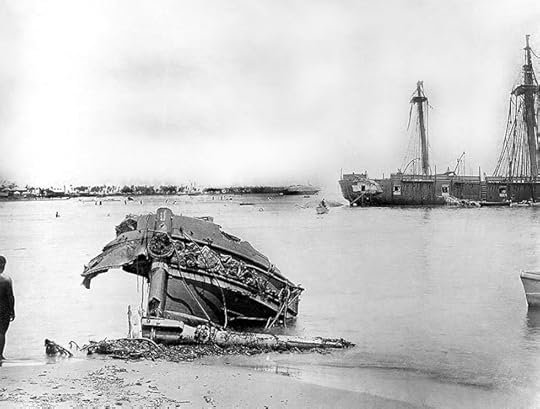
After the tragic hurricane it was left to the Samoans to carry on independently, the super-powers seemingly licking their wounds, until ten years later when the Americans and the Germans split the islands between them. After the First World War, the German territory was taken under New Zealand administration. Western Samoa became an independent nation in 1962 but American Samoa remains a part of the US territories.
Hurricanes and storms continue to pound the islands, though, almost like an expression of anger.

Clancy's comment: Mm ... always have respect for nature.
I'm ...


August 17, 2021
6 October 2021 - GOLF COURSE ONLY ACCESSIBLE BY HELICOPTER
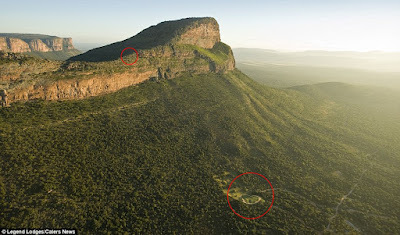
GOLF COURSE ONLY ACCESSIBLE
BY HELICOPTER
G'day folks,
If you are a fan of golfing, this may be one of those places for you. This is the world’s toughest golf hole where players are literally flown up to the tee, which just so happens to be on top of a mountain, in a helicopter!
Forget your local pitch and putt, this mammoth Par 3 is one of golf’s greatest challenges – and that’s just getting to the tee! The Extreme 19th is the world’s longest Par 3, measuring 391 yards, and challengers can only access the tee by helicopter. Sitting atop South Africa’s Hanglip Mountain, at 1300 feet tall (400 meters), it is also the globe’s highest hole, meaning it takes almost 30 seconds for any tee shot to reach the Africa-shaped green below.
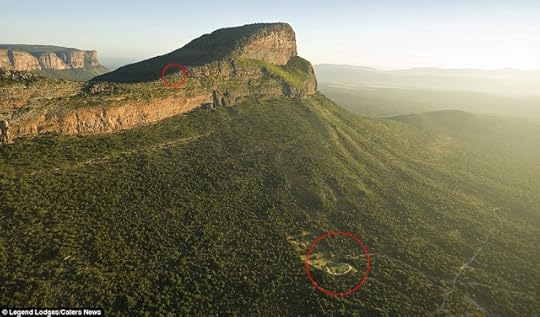
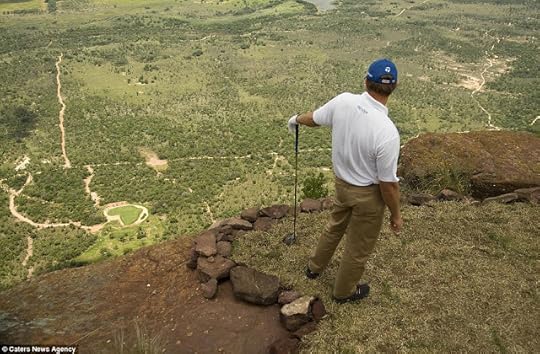

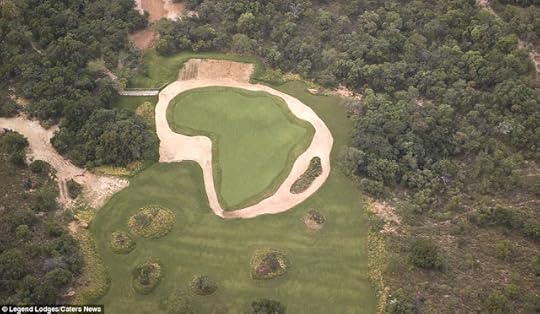


Clancy's comment: It would be fun to go here even if you aren’t a big golfer. However I’m sure every golfer would love to take on this golf challenge. Could you imagine actually getting a par 3 on this hole? What if you got a hole in one? I wonder if that’s ever been done. This is pretty awesome though and it’s great to see that there are people out there that take on this challenge.
I'm ...


11 October 2021 - WINDOW WASHERS SURPRISE SICK KIDS - ALABAMA
 WINDOW WASHERS SURPRISE SICK KIDS IN ALABAMA G'day folks,
WINDOW WASHERS SURPRISE SICK KIDS IN ALABAMA G'day folks, The last thing that anybody wants is for a child to be sick with an illness that forces hospitalization. Kids are so young, vulnerable, and innocent. They don’t deserve any of the bad things that may happen to them.
Luckily there is a group of very compassionate superheroes that surprised some of the kids that are staying at the Children’s Hospital of Alabama. They were all staying at the Benjamin Russell Building when a group of superheroes arrived from the skies!
They decided to dress up as various superheroes, just to bring a smile to the face of the many kids staying there. They were suspended high above the ground. They weren’t there to fight any villains or to film a movie. No, they were there to cheer up the many children that are fighting their own villains.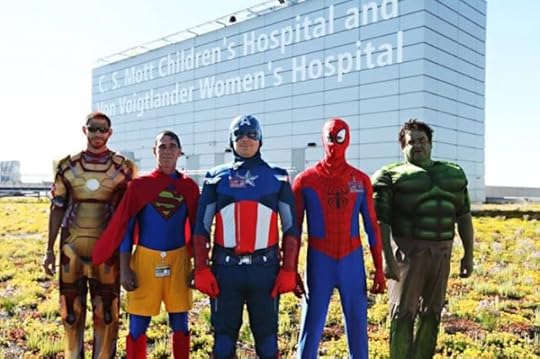 Some people may think that these guys are crazy, but they are all window washers who do this for a living every day. They work for Squeegee Cleaning Services of Chelsea.
Some people may think that these guys are crazy, but they are all window washers who do this for a living every day. They work for Squeegee Cleaning Services of Chelsea.
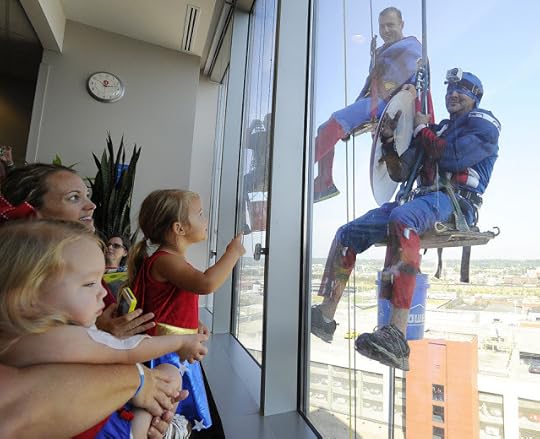
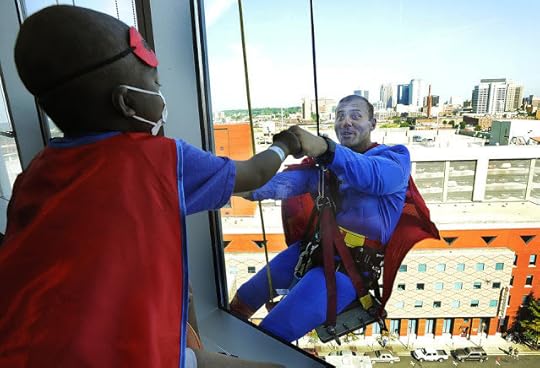

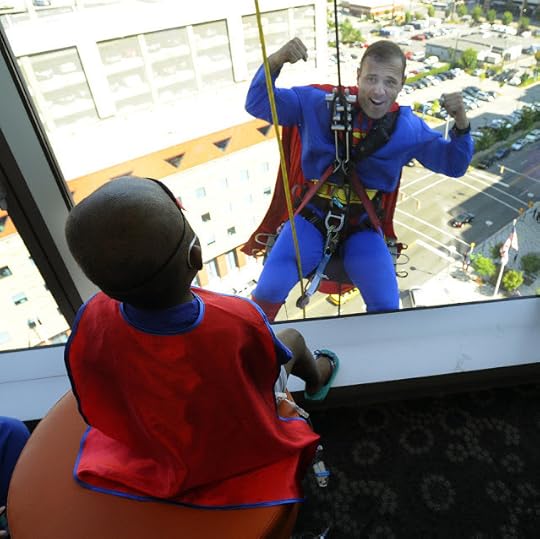


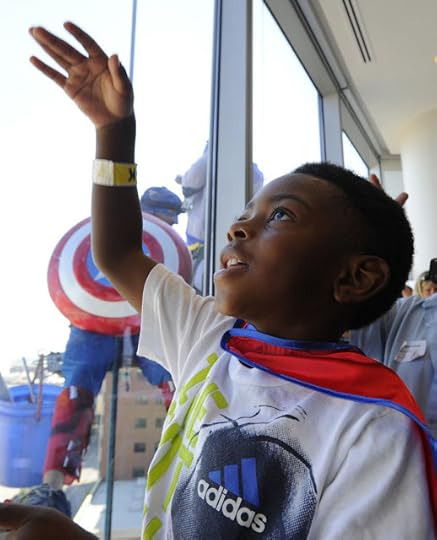

Clancy's comment: Go, guys! Love ya work!
I'm ...


August 16, 2021
17 August 2021 - WW1 SOLDIER'S ROOM REMAINS INTACT AFTER 100 YEARS
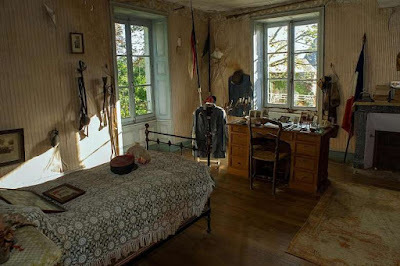
WW1 SOLDIER'S ROOM REMAINS
INTACT AFTER 100 YEARS
G'day folks,
Daniel Fabre recently purchased a home in France with a very special stipulation that accompanied the deed.
Typically when you purchase a home, the previous owners will have completely cleaned out their belongings and given you a new space to fill. That’s not the case at all with Daniel’s new home and he plans to keep it that way. In fact, this room has been kept that way for over 100 years ago since the day they purchased the home. It’s quite a unique story.
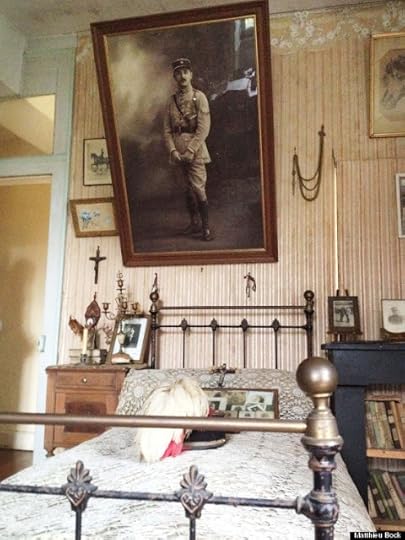

Hubert Rochereau was a Second Lieutenant for the French Army during World War 1. He left home for war and his parents left his room alone so it would be the way he left it upon his return. Hubert was killed from wounds inflicted in battle in Belgium on April 26, 1918. His parents were obviously devastated and sold the home in 1936 with a special clause in the deed.
The soldier’s bedroom must remain exactly the way it was for 500 years. So far, it’s been almost an entire century and the bedroom has been left exactly as it was the day Second Lieutenant Hubert left for war. The bedroom is still full of all of his possessions. His military jackets have holes from moths and have been tattered over the years. His desk is still covered with his military paperwork and personal pictures. There’s even an untouched gun collection.
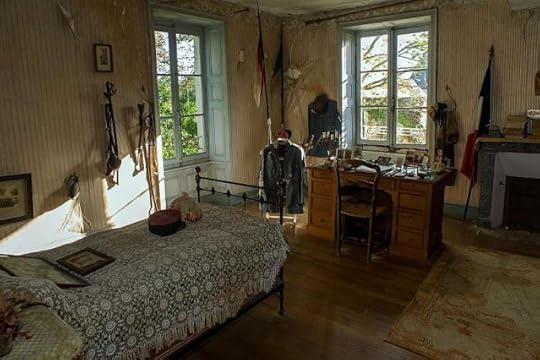
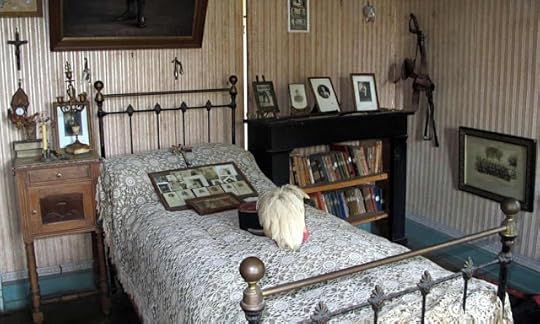
The current owner of the home has done some research and has found that there is no legal basis binding him to keeping the room that way. He does respect the history and memory of this veteran and plans to keep the room the same. There have been 2 previous owners who have felt the same way and have kept the room perfectly intact.
The room is a part of history that has been perfectly preserved in its original state. It is an honorable tribute to Second Lieutenant Hubert Rochereau who also has his name listed on a monument in Libourne, France where his regiment was based. He was also awarded the Legion Of Honour for his bravery after he was killed in war.

Clancy's comment: Extraordinary.
I'm ...

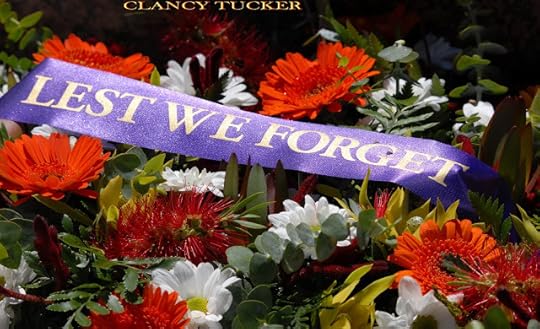
August 14, 2021
5 October 2021 - HERO FIREFIGHTERS SAVE LIVES IN MUDSLIDE
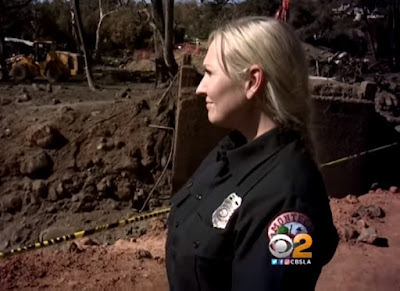
HERO FIREFIGHTERS SAVE
LIVES IN MUDSLIDE
G'day folks,
It is not only ordinary citizens that can amaze, inspire, and touch us with their passion and bravery. Even public service agents like military personnel and rescue teams, who every day risk their lives in the name of protection of others, can go above and beyond the call of duty. In 2018, Southern California was hit by a barrage of earth-shattering mudslides that shook and dismantled the very foundation of homes. Rescue efforts were mobilized quickly and coordinated by firefighter Maeve Juarez.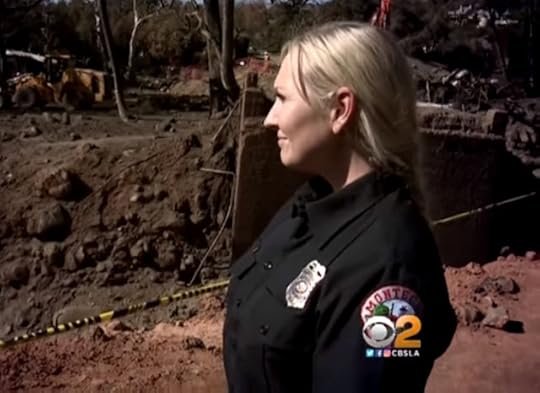
They stabilized the situation and left the area as night had fallen. Mere moments after they left, a gas explosion set the neighboring houses and bridge ablaze. Juarez was back on the scene in minutes. As she arrived, a couple was plunging from their home, now engulfed in flame. The woman’s ankles broke from the fall, and Juarez carried her a quarter-mile away to be airlifted to safety. Juarez swiftly called her team back in and they worked tirelessly through the night, sifting through the debris while battling flames and mud. Juarez and her team reportedly saved over 100 lives that night. She and her colleague Andy Rupp were presented with the first Medal of Valour awards ever to reach the Montecito Fire Department.

Clancy's comment: Great work, team. I'm ...


4 October 2021 - LOST 52 PROJECT SEARCHES FOR WW11 SUBMARINE

LOST 52 PROJECT
SEARCHES FOR
WW11 SUBMARINE
G'day folks,
Tim Taylor and his team searched for a U.S. submarine that disappeared without a trace 75 years ago with 80 sailors aboard.
But while attempting to solve the decades-old mystery, his underwater vehicle developed a fault. Frustrated, Taylor brought the craft back to the surface, not expecting to find much. Then he glanced at the recorded data, and the truth was enough to make his arm hairs stand on end.
Mysterious Disappearance
The sub the researchers were searching for is the U.S.S. Grayback. Or, as it was less lyrically known, the S.S.-208. This salvage operation was carried out on behalf of the Lost 52 Project, which is dedicated to locating the 52 U.S. submarines that disappeared in WWII. That’s right: the U.S. Navy had posted the Graybackas missing in late March 1944, over 75 years ago. And little is known about the sub’s mysterious disappearance.
Last Communications
On January 28, 1944, the Graybackembarked on a combat patrol from Pearl Harbor. It was her tenth mission – and, as it happens, it would be her final one. The sub sent a message back to base on February 24, reporting that she’d sunk the Japanese freighters Toshin Maru and Taikei Maru and hit two others. But that wasn’t the last anybody heard from her.
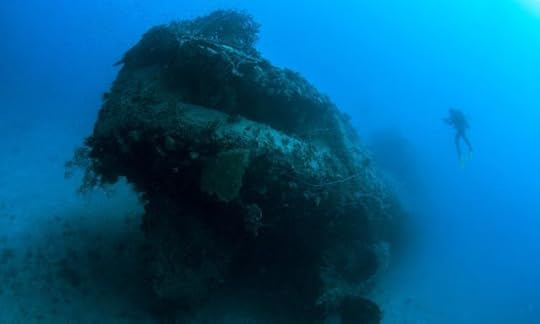
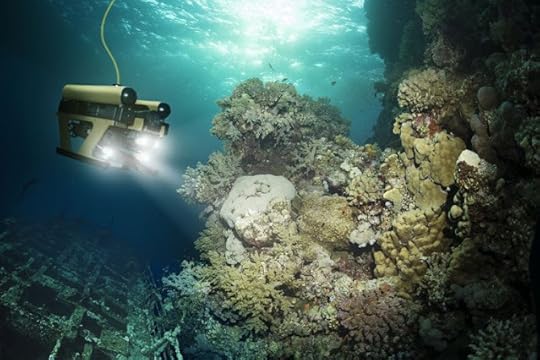
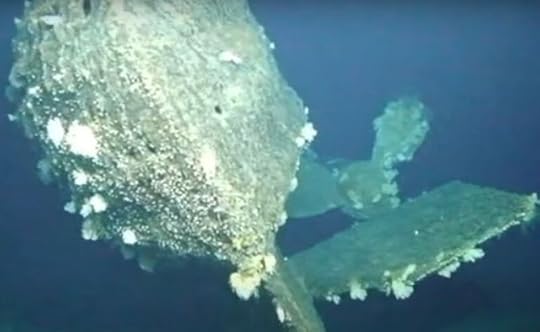
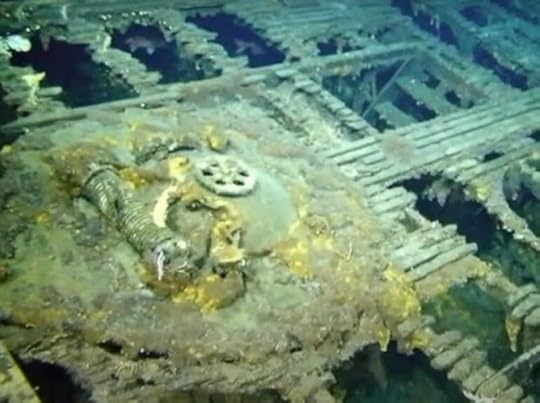
Never Reached Its Destination
The sub made another report on February 25. Her crew said the craft had done serious damage to the liner Asama Maru– a Japanese troop carrier – and sunk the tanker Nanpo Maru. But these attacks over two days had left the Graybackwith just two torpedoes. So she had to set sail to Midway Atoll in the North Pacific for resupply. Yet the craft never arrived.
Three Weeks Missing
That February 25 radio message was the last anyone heard from the Grayback. Navy commanders had anticipated that the submarine would dock at Midway Atoll on March 7, 1944 – but there was no sign of her on that date. Even more alarmingly, the Grayback still hadn’t appeared three weeks later. So the authorities had no choice but to declare her and her crew of 80 as lost at sea. They did this on March 30. Still the question remained: what had happened to the Grayback?
Dozens of men had seemingly perished, leaving their devastated loved ones looking for answers. But there was simply no trace of the submarine that had proved to be a huge asset to the U.S. Navy. And make no mistake about it: the Grayback and her crew had played their part in many WWII battles. That’s perhaps not surprising when you consider the craft was built at the legendary Groton, Connecticut’s Electric Boat Company.
Lost 52 Project
And it wasn’t until 2018, when American Tim Taylor decided to re-examine the case of the Grayback’s disappearance, that the mystery was untangled. Taylor is the founder of the Lost 52 Project – a private enterprise working to find the remains of the 52 submarines that disappeared without trace during the Second World War.
But in fall 2010 Taylor and his crew aboard Research Vessel Tiburon discovered the remains of the R-12 using a high-tech remotely controlled robot. The team also went on to revisit the area on further expeditions, mapping the site and taking images of the wreck. In addition, they made every effort to contact surviving relatives of the submariners who had died in the accident.
And it was that successful hunt for the wreck of the R-12that prompted Taylor to found the Lost 52 Project. The organization takes its name from the fact that 52 submarines were sunk without a trace during World War II. These tragedies had an extremely high human cost, too, with 3,505 submariners perishing in total.
In particular, Taylor wants to both uncover the fates of these sunken subs for posterity and, crucially, to give family members of the lost seamen some closure. And along with locating the craft, Lost 52 works to create comprehensive surveys of the wreckage found, collects artifacts and makes material available for educational purposes.
What’s more, the Lost 52 Project has discovered two other WWII submarines alongside the R-12 and the Grayback. The U.S.S. Grunion was found off the coast of Alaska, while the U.S.S. S-28was located in Hawaiian waters. A Cold War-era vessel, the U.S.S. Stickleback, was similarly found off Hawaii. Altogether, then, Taylor and his team’s efforts have been rewarded by notable successes.
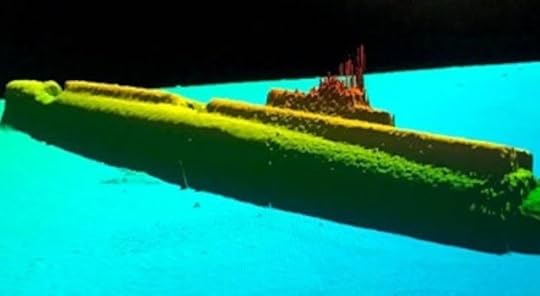

Amazingly, the Lost 52 Project team did indeed find the lost submarine, whose hull was almost entirely in one piece even after several decades had passed. Yet this discovery was a cause for mixed emotions among the divers and researchers.

Clancy's comment: Well done, guys. Great determination.
I'm ...


August 12, 2021
28 August 2021 - THE GOLD RUSH INSPIRED ME TO WRITE A BOOK
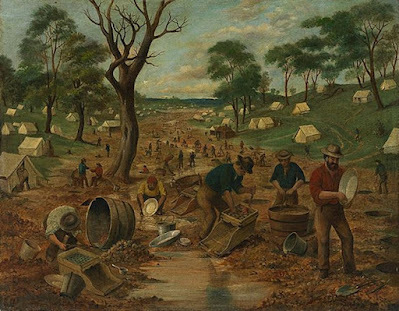
THE GOLD RUSH INSPIRED
ME TO WRITE A BOOK
G'day folks,
On February 12, 1851, a prospector discovered flecks of gold in a waterhole near Bathurst, New South Wales (NSW), Australia.
Soon, even more gold was discovered in what would become the neighboring state of Victoria. This began the Australian Gold Rush, which had a profound impact on the country’s national identity.
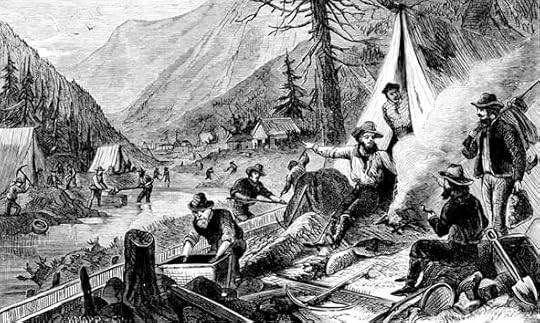
Within a year, more than 500,000 people (nicknamed “diggers”) rushed to the gold fields of Australia. Most of these immigrants were British, but many prospectors from the United States, Germany, Poland, and China also settled in NSW and Victoria.
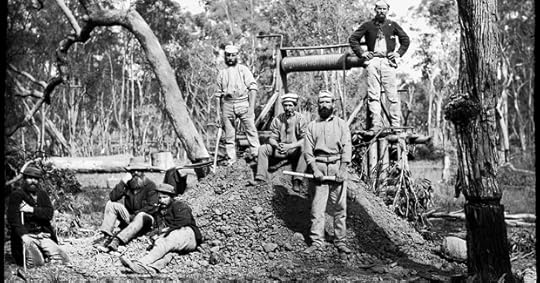
Even more immigrants arrived from other parts of Australia. Wages in the region doubled, but it was still difficult to find workers as people abandoned their stable jobs to seek their fortune in the gold fields. These “diggers” forged a strong, unified identity independent of colonial British authority. This concept of “mateship. . . [has] been central to the way [Australian] history has been told,” according to the Australian government.
 I can still recall how young I was in primary school when a teacher gave me a flimsy book about the Australian gold rush. From that moment I was hooked. Years later as an established author, I wrote 'Irish Gold'. It's a credible fiction story about the Irish on the gold fields. So, what's it about?
I can still recall how young I was in primary school when a teacher gave me a flimsy book about the Australian gold rush. From that moment I was hooked. Years later as an established author, I wrote 'Irish Gold'. It's a credible fiction story about the Irish on the gold fields. So, what's it about?

BLURB:
Pat Toomey’s violent father dies, leaving Pat, his mother and four sisters in the Port Phillip District of Australia during the 1850’s gold rush. Pat and best friend, Seamus, are offered a job by Irishman, Michael Macevoy; to transport supplies to miners in Ballarat. They take the job, and Macevoy becomes a regular caller at the Toomey’s home. The boys meet many people who know their boss, and it intrigues them. They also save a Chinese family from a dangerous bushranger, Jack Lawrie, and meet another wanted bushranger, Martin Riley – Michael Macevoy’s best mate.
Jack Lawrie escapes and seeks revenge, surprising the boys one evening, but Martin Riley appears from the dark and seriously maims Lawrie. Whilst transporting Lawrie to Castlemaine, troopers appear, notice Riley, and a chase ensues. Shots are fired and Riley is injured, but Seamus mounts Riley’s horse and rides away. Lawrie and Pat are in custody, a trooper has been shot, and Riley is still free, but Michael Macevoy arrives and Pat is released. That night, Martin Riley dies.
The boys deliver a shattered Macevoy to Pat’s mother’s home, and they step up to run Macevoy’s Transport when Michael enters a period of deep depression. The boys work hard, employ staff, and expand the business to the Bendigo goldfields. Will Michael Macevoy overcome his depression? Why does Michael know so many people?
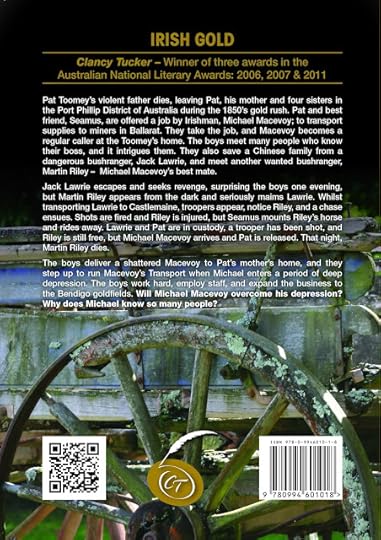

AMAZON
To purchase a signed paperback email me at:
clancy_tucker@hotmail.com

I'm ...

